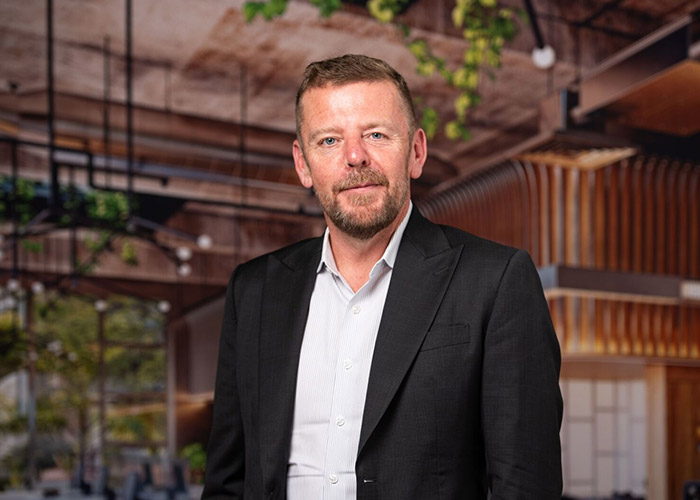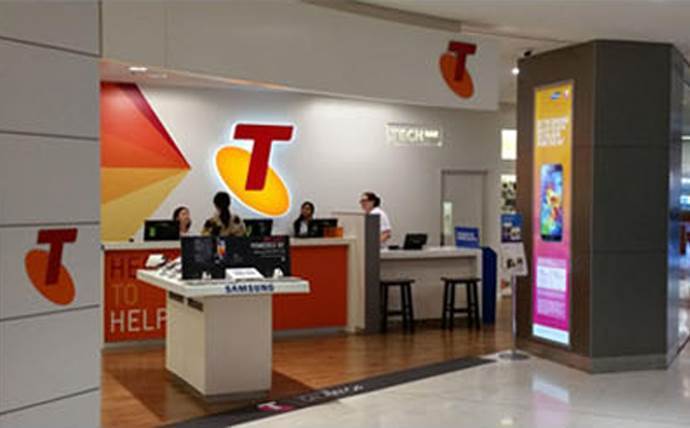
GrainCorp is piloting AI to communicate with 3000 casual workers employed during the annual harvest season and wants to apply AI more broadly to understand its customers and supply chain.

(L-R) Izzi Hutchinson from GrainCorp and Elena Wise from Microsoft.
Customer experience manager Izzi Hutchinson told the Microsoft AI Tour in Sydney last week the company had stood up an “AI-based chatbot” in Teams to help site managers communicate with workers during the harvest of grains and oilseeds.
“One of the challenges we’ve got at GrainCorp [is] during the harvest period, we employ upwards of 3000 casuals,” Hutchinson said.
“What we’ve found over time is that our site managers … are inundated with a lot of questions from our casual staff over that busy period.”
Hutchinson likens harvest to the Boxing Day sales in retail: “You’re under the pump and it’s just go, go, go for a couple of weeks.”
The chatbot, which runs from within Teams, serves two purposes: to help answer questions the casual workers have, but also to break down any language barriers, translating “processes and procedures that are written in English into a plethora of different languages”.
“It’s only been released for two months now and in that time, we’ve had brilliant feedback on it, just in regard to the ease of use,” Hutchinson said.
“We’ve done it through Teams so they don’t have another app, it’s literally on a device [and through] an app that they’ve already got, and it’s very simple to use.”
Hutchinson noted that due to the hectic nature of harvest, it was also a challenging time to launch the chatbot.
“Once [the site managers] started to understand what it does and had five minutes to have a go with it, they got it,” she said.
GrainCorp sought to improve its chances of success by getting “backing right through the business from the CEO down, just to ensure that everyone across the business was really clear on what we were doing with AI.”
It also sought to align the programme with site managers that were “really interested in the product”, involving them in the design and then seeding the pilot to this cohort and then beyond.
“We sent it out to 10 users and from there we let it loose on 130 users, which is not a huge user base, but we were very clear from day one that this is a pilot, we don’t expect 100% [perfect] results every time, but we need to understand what the technology can do for us so that we can start to iron out any of those creases that do pop up – and they did,” Hutchinson said.
One of those “creases” was the chatbot’s inability – in the early days – to correctly identify the company’s current CEO.
“The chatbot continuously told us that our old CEO was our current CEO,” Hutchinson said.
“The worst part of it is, the more you answer that question, the more you train the chatbot.”
After some investigation, the cause was found: the chatbot was looking at annual reports on the GrainCorp website for the answer, which did not appear in the right order.
“We had to make a couple of small changes to the website – put the current [annual report] at the top and away we went,” Hutchinson said. “So, it came down to data management and document creation.”
AI expansion
With the chatbot bedded down, GrainCorp is now looking more broadly at other potential applications of AI.
An obvious area of applications is in understanding its customers better; an area that has had sustained focus over the past decade through a long-running implementation of Microsoft Dynamics.
“We’ve been working with Microsoft Dynamics for 10-plus years now,” Hutchinson said.
“We’ve got the majority of the company working particularly within the CRM space, and we’re in the process of bringing our last sub-business into Dynamics at the moment.
“Purely the reason for that is to really understand who our customers are so we can better service them, and Dynamics allows us to do that.”
GrainCorp is best known as an exporter of grains and oilseeds to international markets, but it also manufactures products that are sold to commercial bakers, quick service restaurants, and retail consumers.
“GrainCorp is really trying to understand who our customers are,” Hutchinson said.
“We’ve got a breadth of customers from local farmgate growers producing grain right through to international customers, and really understanding what their needs and wants are, so [it’s about finding] where in that customer journey can AI fit for us to better understand but also deliver a product that is suited to their needs”.
Related to that, Hutchinson sees a potential role for AI to play in sustainability and traceability labelling on packaging: helping customers understand where the product comes from.
“One question that we’ve got from a sustainability point of view is what practices a grower is doing, so what chemicals has the crop been treated with, has the grain been treated etc. [This data is collected and stored] on platforms that are not native to GrainCorp. How do we take it and turn it into something that is tangible for a consumer of a margarine or a bread product, such as labelling?” Hutchinson said.
One of the potential options to stitch data sources together is through Microsoft Fabric, an analytics offering from the vendor that covers everything from data sourcing to analysis.
Ry Crozier attended Microsoft AI Tour in Sydney as a guest of Microsoft.






